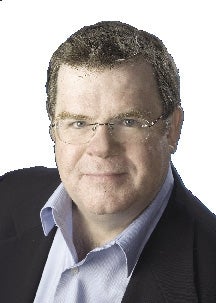One reality for businesses coming out of the recession is that companies are doing more with less. This is especially true with workforce productivity. This is something I’ve talked extensively about with business owners over the past months. Specifically, what are characteristics of high-performing organizations? What are some best practices that enable and empower exceptional employee performance? Here are five conclusions many of the business owners agree on.
In a high-performing organization, anyone has the freedom to ask, without fear of punishment: “Does it have to be this way?” This seems simple, but its implications are widespread. First, if anyone can ask the question, then everyone is considered a valuable contributor. The question itself reflects a sense of ownership of the process, system, customer or whatever the subject is that the question pertains to. No one is shirking responsibility; rather, they are assuming it. The phrase “without fear of punishment” indicates a positive, supportive environment, not dominated by hierarchies, politics, and one-up /one-down relationships.
High-performing organizations focus on skills and training, specifically extensive cross-training. Everyone on a team can do a variety of jobs. In any process or system, there are frequently peaks and valleys of activities. When they occur, the team is capable of supporting each other. Individuals can shift to high-demand areas when needed, making sure the production is kept up and the goals are met. Military special forces are a perfect example of the effectiveness of cross-training. The teams are small, and every team member can do multiple jobs.
A sense of personal responsibility dominates a high-performing organization. When things go wrong (as they inevitably will), the team takes failures seriously and personally, but not in a punishing way. Each team member is acutely aware of the goals and objectives, and they are genuinely disappointed when one or more are not met. However, the disappointment does not translate into self-punishment or punishment of others. Finding fault is not the objective when something doesn’t work. Instead, the team uses mistakes as opportunities for improvement. The focus is on finding the reason why something did not work, and instituting corrections to make sure the mistake is not repeated.
Individuals on teams work on their relationships. High-performing organizations are comprised of individuals who work together on teams, and the teams work together across the business. Each team is a mix of relationships and camaraderie. No relationships are the same. However, positive relationships are essential. Team members take the time to get to really know each other and to build relationships based on authenticity and trust. Conflicts will occur, and when they do, team members work to resolve them; they don’t ignore the conflict, hoping it will go away. Communication is the key.
There’s a lot of listening in high- performing organizations. Team members listen to each other. Teams listen to the feedback from other teams. Leaders listen to everybody. One of the fastest paths to poor performance is to discount team members. And one of the fastest ways to discount someone is to not listen to them. In high-performing organizations, everyone feels that they are at least heard. It’s not realistic to expect that your opinion or comment will always be adopted, but you at least want to know your opinion or comment is valued. Again, open and honest communication is the key.
Great leaders build high-performing organizations. Or, better said, they hire great people and empower them to build high-performing organizations. Five foundation blocks for empowering high performance are the ability to question, the ability to do your teammates’ jobs; a personal sense of ownership and responsibility; positive relationships and a positive work environment; and certainty that your voice and opinions will, at minimum, be heard.
Time invested in building this type of organization is time well spent.
Ken Cook is managing director of Peer to Peer Advisors and co-author of “How To WHO: Selling Personified,” a book and program for building business through relationships. Learn more at www.howtowho.com.
Read more
Don’t ‘Mail It In’ By Using Boilerplate Language
Company Strategy Puts You In The Driver’s Seat
Sometimes, Hierarchy Hurts More Than It Helps
How You Listen Makes A Difference In Business Relationships
Sometimes Failure Is A Good Thing (Just Ask Lincoln)
Trying To Boost Sales? What Are You Doing To Build Relationships?

